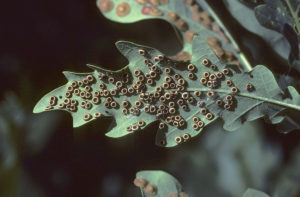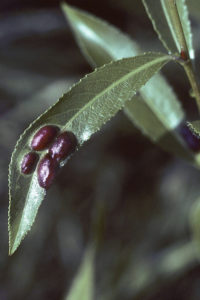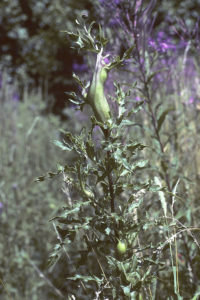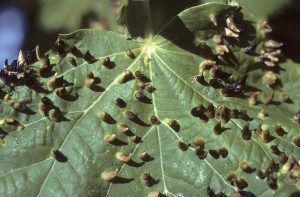Kaj Halberg - writer & photographer
Travels ‐ Landscapes ‐ Wildlife ‐ People
Gall rain
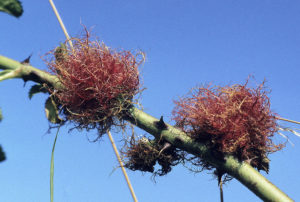
On the forest floor, the larvae remain as pupae inside the galls during the winter, and in early spring, the now adult gall wasps gnaw their way out of the galls. The odd thing is that only female wasps hatch at this time. They now lay eggs in leaf buds or male inflorescences of oaks, dying shortly after. The larvae, which hatch from these unfertilized eggs, produce galls that look entirely different from the lens-shaped galls, being globular, measuring up to 8 mm across.
Despite being unfertilized, these eggs nevertheless produce both males and females, which hatch in early summer. They mate, and the females lay eggs in the nerves of oak leaves. Larvae from these eggs produce lens-shaped galls, and the circle has been completed. As females from the two generations look very different, they were formerly believed to constitute two species.
There are many other spectacular galls on Vorsø. Besides the lens-shaped galls, you may find globular galls, red or yellow, on oak leaves, produced by larvae of the common oak gall wasp (Cynips quercusfolii), and button-like galls, caused by larvae of the silk button spangle gall wasp (Neuroterus numismalis).
On stems of dog rose (Rosa canina), you often observe beautiful bedeguar galls, resembling a red lichen. They are produced by larvae of the bedeguar gall wasp (Diplolepis rosae). Many larvae live in each of these galls.
Oblong red galls on willow leaves are sometimes produced, caused by larvae of the willow redgall sawfly (Pontania proxima).
Stems of creeping thistles (Cirsium arvense) are often swollen, which is caused by larvae of the thistle-stem gall fly (Urophora cardui, formerly Euribia cardui).
On the leaves of a large small-leaved linden (Tilia cordata), which was planted near the farm house, I have often found numerous galls, caused by larvae of the lime nail gall mite (Eriophyes tiliae).

